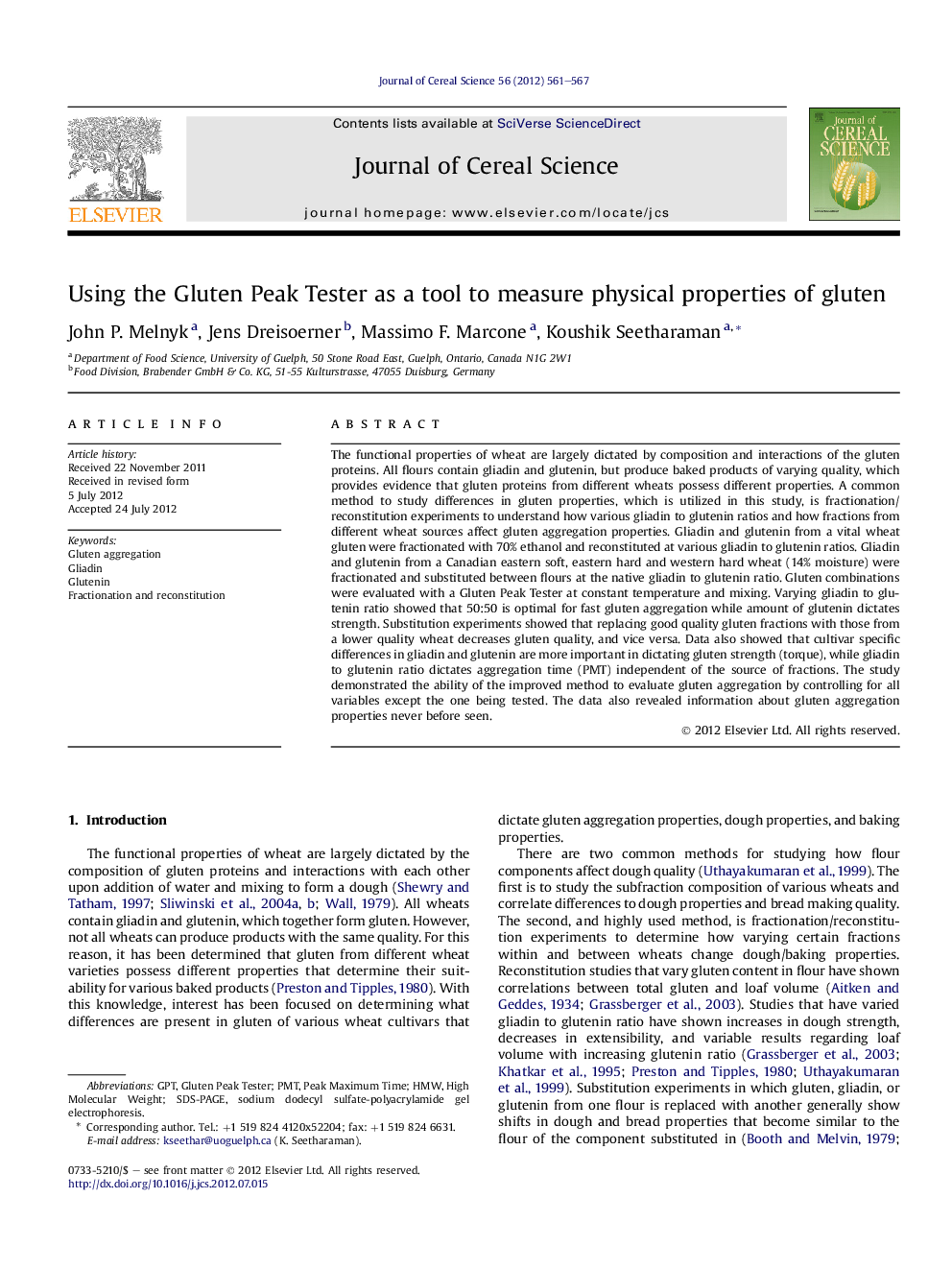| Article ID | Journal | Published Year | Pages | File Type |
|---|---|---|---|---|
| 4516124 | Journal of Cereal Science | 2012 | 7 Pages |
The functional properties of wheat are largely dictated by composition and interactions of the gluten proteins. All flours contain gliadin and glutenin, but produce baked products of varying quality, which provides evidence that gluten proteins from different wheats possess different properties. A common method to study differences in gluten properties, which is utilized in this study, is fractionation/reconstitution experiments to understand how various gliadin to glutenin ratios and how fractions from different wheat sources affect gluten aggregation properties. Gliadin and glutenin from a vital wheat gluten were fractionated with 70% ethanol and reconstituted at various gliadin to glutenin ratios. Gliadin and glutenin from a Canadian eastern soft, eastern hard and western hard wheat (14% moisture) were fractionated and substituted between flours at the native gliadin to glutenin ratio. Gluten combinations were evaluated with a Gluten Peak Tester at constant temperature and mixing. Varying gliadin to glutenin ratio showed that 50:50 is optimal for fast gluten aggregation while amount of glutenin dictates strength. Substitution experiments showed that replacing good quality gluten fractions with those from a lower quality wheat decreases gluten quality, and vice versa. Data also showed that cultivar specific differences in gliadin and glutenin are more important in dictating gluten strength (torque), while gliadin to glutenin ratio dictates aggregation time (PMT) independent of the source of fractions. The study demonstrated the ability of the improved method to evaluate gluten aggregation by controlling for all variables except the one being tested. The data also revealed information about gluten aggregation properties never before seen.
► Amount of gliadin to glutenin is important for gluten aggregation. ► Wheat variety of gliadin and glutenin is important for gluten aggregation. ► New high shear-based method can potentially predict functionality of gluten.
